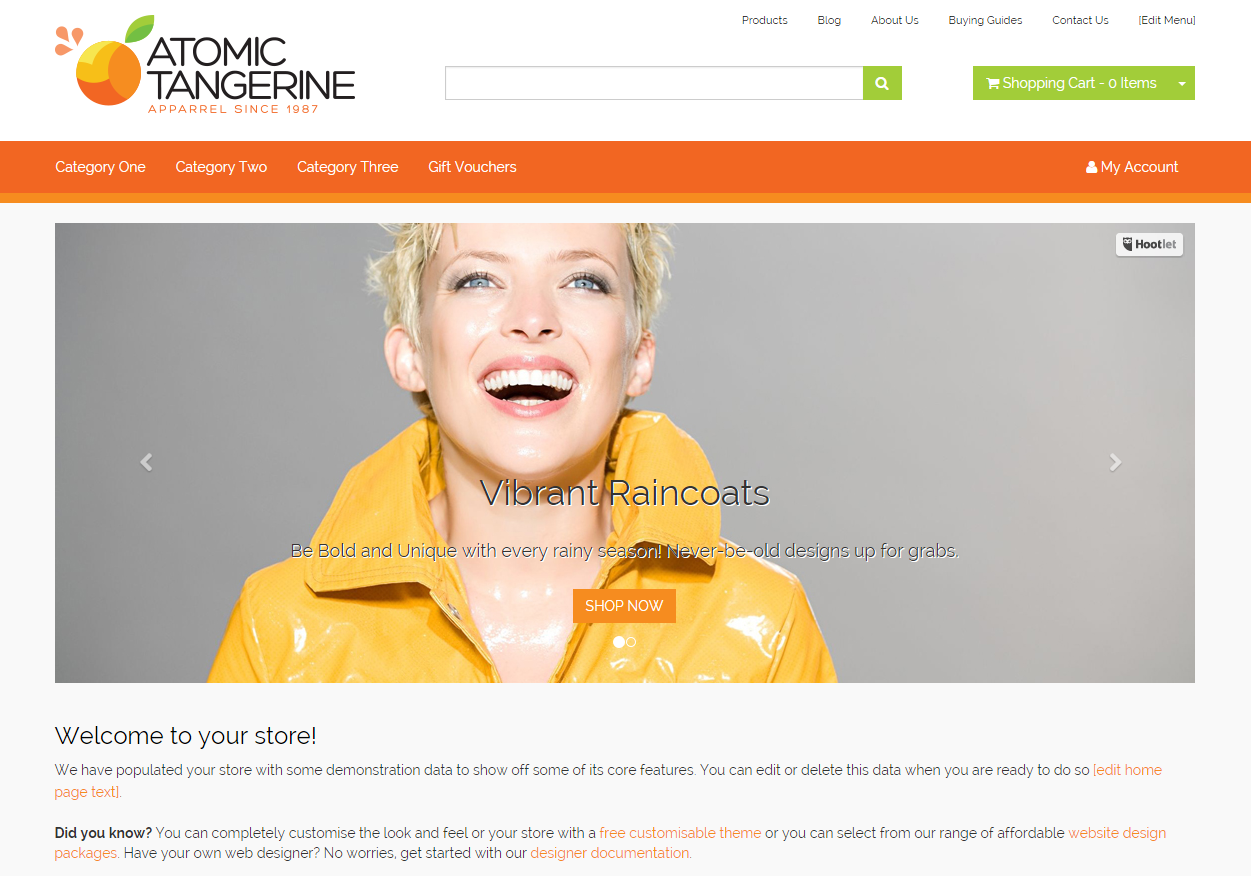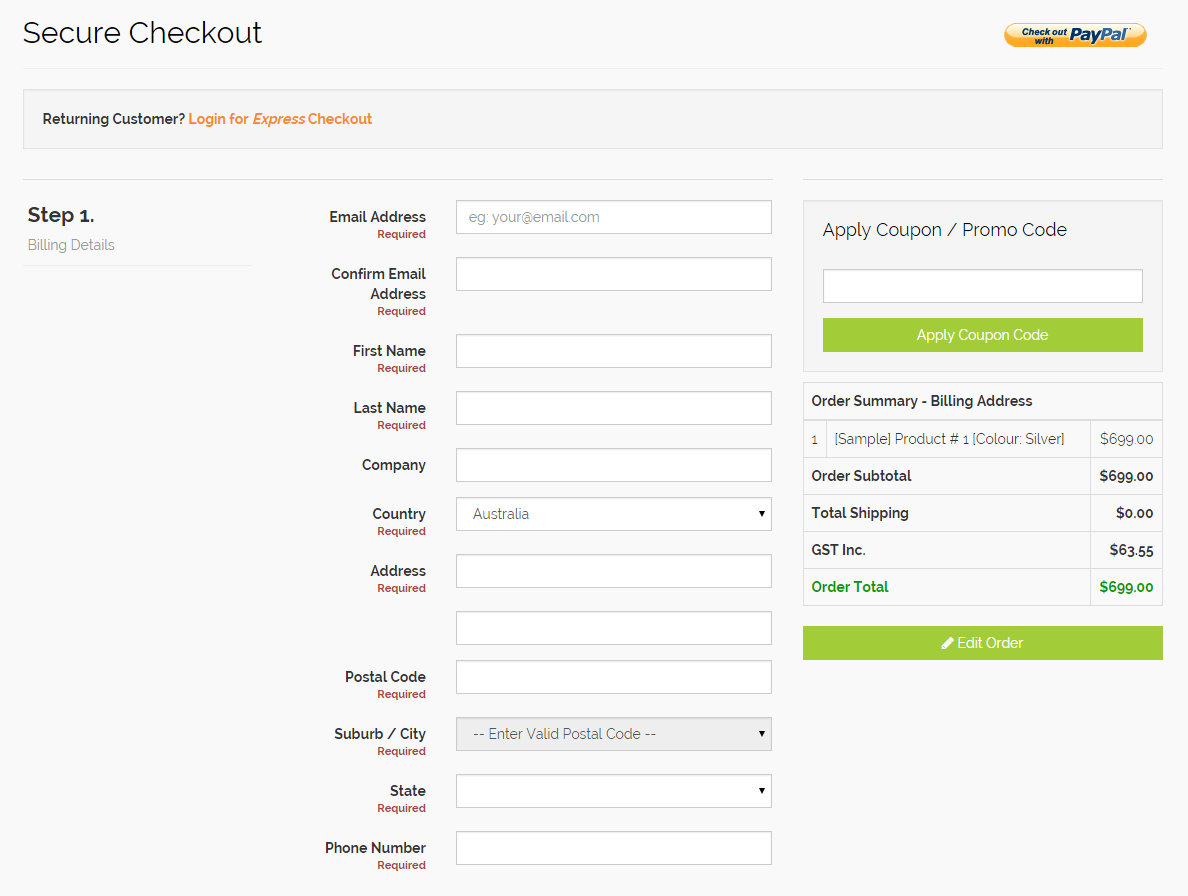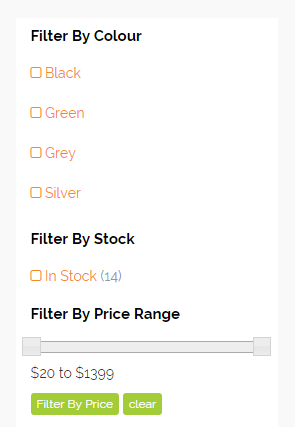Best practices for ecommerce web design (part 2)
Welcome to the second installment Best practices for ecommerce web design. If you missed part 1, don't fret, because you can read all about it.
Homepage
The king of pages, a veritable ruler, and therefore, the most important. Your homepage is the most commonly visited section of your website; the following elements should be considered as content.

Advertisements
Entice shoppers with delicious special offers, shiny new product ranges, or informative content. Adverts usually take form as cleverly used imagery and text, linking directly to the promoted page; hiring a skilled graphic designer for these is essential, as their highly-valued location on your homepage should elicit a positive response from the user – badly-designed graphics will lessen your credibility.
Products
Presenting the customer with a choice of featured products, top sellers, new arrivals, and items on sale may appeal to those who like to casually browse for products, without even having to leave the homepage.
Category Page
This page contains a selection of your product range, grouped by category. The shopper should be able to clearly see which items are available, and click into them for further information.
Filters
Some categories in your business may contain hundreds or even thousands of products; providing filtering options is an ideal way to narrow down your search. Common filtering options are price, brand, specific (e.g. colour), and sub-category. Ideally, as many filter options as possible should be presented, giving the user a great deal of control.
On sale label
Shoppers love a bargain – adding a small “on sale” label to a product, coloured in such a way so that it stands out clearly from the other colours used on the site, is a great way to attract the customer’s attention.
Product page
This page is dedicated to a single product, showing the item off in all its utilitarian glory. All of the standard product info should be available on this page, with some notable inclusions below.
Clear “Add To Cart” button
Never underestimate the importance of colour; a large “Add To Cart” button should have its hue decided based on how well it stands out on the page. For example, if the website’s palette is made up from mostly of blues and greens, a sharp red will make the button stand out on the page, which means there’ll be little chance of the customer becoming frustrated from having to visually search for it.

Shipping information
Many online shoppers realise that shipping can drive up the cost of a purchase, and therefore, want to know the price before having to arrive at the cart or checkout. Including a shipping cost calculator on the page is the most effective way to display transit costs, based on the user’s postcode.
Additionally, if you offer free shipping on your products, this should be clearly displayed, as anything free as part of a purchase has massive appeal. In fact, you should seriously consider offering free shipping as standard, and factoring shipping costs into your product pricing.
On sale status
Similarly to the product listings on the category page, if an item is on sale it should be clearly advertised as so – online shoppers (as with offline shoppers) will then find bargains extremely inviting.
Cross-sells
There should always be room reserved for items that go well with the main product listing. Selling a high-powered torch? The customer will need some batteries, and possibly a carry case to go with it. Cross-selling is a great way to make additional revenue.
Product information/description
It’s important to include the necessary information for a product, particularly if it’s something technical, like a computer. If the resources are available, you might want to consider having your product information professionally designed with HTML/CSS, resulting in a polished, sharp look.
Checkout page
After all the hard work convincing the user to purchase, this is where they finally put their trust in you, and process the order. Many users get to this finishing line and decide to “bounce” to another website without completing the sale – the following tips should help to prevent them from doing so.

No registration checkout
Many online shoppers prefer to shop without having to register an account, some reasons for this include believing they will be contacted with promotions via email, wanting to save time, which they’d rather spend doing something else, and not wanting to remember another username and password. Providing customers with the ability to purchase without registering an account will increase your sales.
Fewest fields possible
Prompt the user for as few fields as possible; the faster and simpler the process is, the more likely they are to complete their purchase. Different sections should be clearly defined too, for example the customer’s shipping address should have a clear header for that area.
Security assurance
Credit card fraud still frightens many people away from online shopping, therefore it’s vital to provide them with additional confidence. This can be achieved by letting the customer know that the site is secured with SSL encryption, usually via some form of professionally-designed graphic. In addition, if you use a security service such as Incapsula, you’ll want to advertise this too.
To wrap it all up
I hope that by now, you have some weapons in your arsenal to design a highly profitable ecommerce website. This article is just skimming the surface though – at Neto we encourage you to continue learning about valuable design practices, so that world domination may appear on the horizon for your online business.



